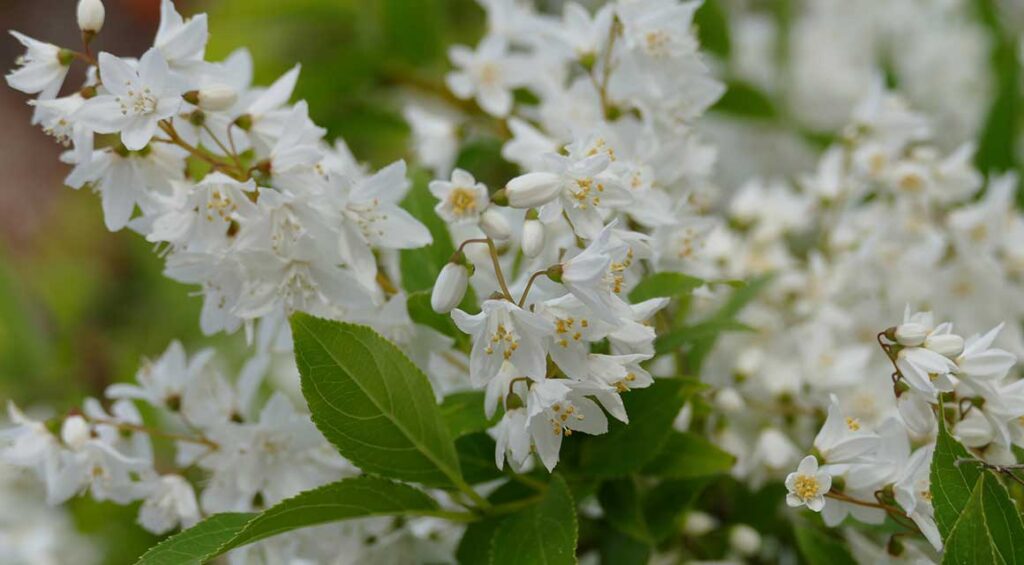People plant hedges for a variety of reasons. Often garden lovers are looking for a way to add more greenery to their garden while keeping prying eyes away. Low hedges are often used to delineate patios and borders. What hedge plants are suitable for low hedges?

Formal low hedges
The best known hedge plant for a low hedge is boxwood (Buxus sempervirens). This hedge plant does not grow taller than 150 cm and is often used for hedges 30-60 cm high. Boxwood is a particularly popular hedge plant because it can be pruned very well into a formal shape. The growth habit is very dense and the leaves of this plant are small, so there are no holes in the hedge when cutting. Because of these features, boxwood is popular not only as a low, formal hedge, but also for topiary.
The fact that boxwood is such a popular plant, unfortunately, has not only advantages. The more often a particular plant is used, the greater the chance that diseases and parasites will spread, and unfortunately that is the case with boxwood. In recent years, the boxwood borer has been spotted in larger and larger parts of the country. Its caterpillars love boxwood leaves – so much so that they often eat the plant completely bare. Although there are pesticides available for boxwood caterpillars, it’s often wiser to look for alternative plants if you live in an area with this pest.
If you want a plant that looks very similar to boxwood, Japanese holly is a great choice. Varieties like Japanese Holly ‘Dark Green’® and Japanese Holly ‘Convexa’ have a tightly branched growth habit and small, dark green leaves, just like the Buxus. Other low hedge plants sometimes used as boxwood alternatives for a formal hedge include creeping spindle and hedge myrtle. As with boxwood, both types of plants are low, evergreen and easy to cut back. With these hedge plants, you’ll have a beautiful, formal ornamental hedge in your yard year-round.

Informal decorative hedges
Not everyone is looking for a formal hedge. Especially when it comes to ornamental hedges in the garden, informal hedges are also very popular. An informal hedge is often not trimmed densely or in a very neat shape, but adds some texture and color to the garden. Many people choose a flowering hedge for informal hedges. Flowering hedges not only look beautiful, but often attract insects such as bees and butterflies to the garden. A flowering hedge adds a lot of life to the garden.
A few beautiful plants that can be used as informal, low hedges are the deutzia, shrub spirea and the amethyst berry ‘Magic Berry’. These three plant species are known not only for their relatively short stature (they all grow no taller than 2 feet and look best cut back in a low hedge), but also for their profuse blooms. For example, deutzia and early bridal spirea have beautiful white flowers in the spring. Japanese spirea varieties bloom in various shades of pink and purple in summer. Amethyst berry ‘Magic Berry’ is known for its beautiful pink berries in addition to its flowers.
The different varieties of roses in our assortment, such as the dog rose and the potato rose, also known as apple rose, can also be used for a low hedge. Not only is this a beautiful choice, but it can also be practical. If you plant these low hedges with long thorns under a window, for example, you will make life difficult for any burglars. There are other burglar-resistant hedge plants in our assortment, such as barberry and firethorn. These can also be planted as low hedges, but bloom less profusely. The firethorn, however, has really spectacular berries.

Versatile hedge plants
So far, we have talked about hedge plants that are really only suitable for low hedges because they do not grow very tall or are less suitable as a hedge if they grow taller because of their growth habit. However, there are also many hedge plants that can grow tall but are also suitable as low hedges. For example, yews, hornbeams and beeches are often used not only as privacy hedges or as hedges to separate areas, but also as low hedges around front yards, for example. These plants, which are actually tall, can easily be cut back to three feet above the ground.
The common yew is a very popular hedge plant precisely because it is so easy to prune. The growth is very dense and unlike other conifers, such as thuja, the common yew can regrow even on old wood. Then it does not matter if the hedge becomes a little too tall or too wide. You can simply cut the common yew hedge back to the size you want and it will just sprout again. Do you plant male and female yew varieties together, for example yew ‘Hicksii’ and yew ‘Hillii’? Then the female plants will get red berries.
Low hedges can serve many different purposes in the garden. A box hedge of 30 cm is ideal for edging a flower bed. A one meter high beech hedge is a good way to separate the front garden from the street, and a hedge rose under the window makes burglars think twice before climbing in.

